
William Childs Westmoreland was a United States Army general, most notably commander of United States forces during the Vietnam War from 1964 to 1968. He served as Chief of Staff of the United States Army from 1968 to 1972.

Robert Strange McNamara was an American business executive and the eighth United States secretary of defense, serving from 1961 to 1968 under presidents John F. Kennedy and Lyndon B. Johnson. He remains the longest-serving secretary of defense, having remained in office over seven years. He played a major role in promoting the U.S.'s involvement in the Vietnam War. McNamara was responsible for the institution of systems analysis in public policy, which developed into the discipline known today as policy analysis.
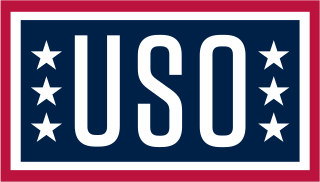
The United Service Organizations Inc. (USO) is an American nonprofit-charitable corporation that provides live entertainment, such as comedians, actors and musicians, social facilities, and other programs to members of the United States Armed Forces and their families. Since 1941, it has worked in partnership with the Department of War, and later with the Department of Defense (DoD), relying heavily on private contributions and on funds, goods, and services from various corporate and individual donors. Although it is congressionally chartered, it is not a government agency.

The Confederate States Army, also called the Confederate Army or the Southern Army, was the military land force of the Confederate States of America during the American Civil War (1861–1865), fighting against the United States forces to win the independence of the Southern states and uphold and expand the institution of slavery. On February 28, 1861, the Provisional Confederate Congress established a provisional volunteer army and gave control over military operations and authority for mustering state forces and volunteers to the newly chosen Confederate president, Jefferson Davis. Davis was a graduate of the U.S. Military Academy, and colonel of a volunteer regiment during the Mexican–American War. He had also been a United States senator from Mississippi and U.S. Secretary of War under President Franklin Pierce. On March 1, 1861, on behalf of the Confederate government, Davis assumed control of the military situation at Charleston, South Carolina, where South Carolina state militia besieged Fort Sumter in Charleston harbor, held by a small U.S. Army garrison. By March 1861, the Provisional Confederate Congress expanded the provisional forces and established a more permanent Confederate States Army.

United States Colored Troops (USCT) were Union Army regiments during the American Civil War that primarily comprised African Americans, with soldiers from other ethnic groups also serving in USCT units. Established in response to a demand for more units from Union Army commanders, by the end of the war in 1865 USCT regiments, which numbered 175 in total, constituted about one-tenth of the manpower of the army. Approximately 20 percent of USCT soldiers were killed in action or died of disease and other causes, a rate about 35 percent higher than that of white Union troops. Numerous USCT soldiers fought with distinction, with 16 receiving the Medal of Honor. The USCT regiments were precursors to the Buffalo Soldier units which fought in the American Indian Wars.

The Battle of Nashville was a two-day battle in the Franklin-Nashville Campaign that represented the end of large-scale fighting west of the coastal states in the American Civil War. It was fought at Nashville, Tennessee, on December 15–16, 1864, between the Confederate Army of Tennessee under Lieutenant General John Bell Hood and the Union Army of the Cumberland (AoC) under Major General George H. Thomas. In one of the largest victories achieved by the Union Army during the war, Thomas attacked and routed Hood's army, largely destroying it as an effective fighting force.

The Armed Services Vocational Aptitude Battery (ASVAB) is a multiple choice test, administered by the United States Military Entrance Processing Command, used to determine qualification for enlistment in the United States Armed Forces. It is often offered to U.S. high school students when they are in the 10th, 11th and 12th grade, though anyone eligible for enlistment may take it.
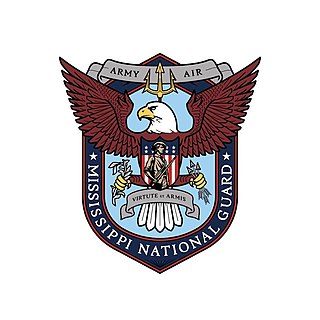
The Mississippi National Guard (MSNG), commonly known as the Mississippi Guard, is both a Mississippi state and a federal government organization, part of the United States National Guard. It is part of the Mississippi Military Department, a state agency of the government of Mississippi. The Adjutant General of Mississippi (TAG), Major General Janson Durr Boyles, serves as the executive director and is subordinate to the Commander-in-Chief, the Governor of Mississippi, in matters relating to the department and the state militia forces.

Beaufort National Cemetery is a United States National Cemetery located in Beaufort County, in the city of Beaufort, South Carolina. Managed by the United States Department of Veterans Affairs, it encompasses 33.1 acres (13.4 ha), and as of 2014, had over 19,000 interments.
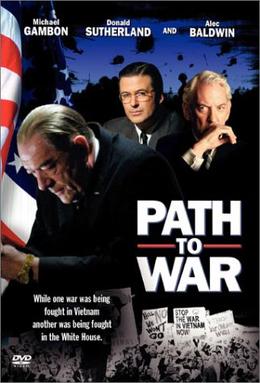
Path to War is a 2002 American biographical television film, produced by HBO and directed by John Frankenheimer. It was the final film directed by Frankenheimer, who died seven weeks after the film debuted on HBO. It was also the last film produced by Edgar J. Scherick during his lifetime—he died seven months after its initial airing on HBO.
The McNamara Line, an operational strategy employed by the United States in 1966–1968 during the Vietnam War, aimed to prevent infiltration of South Vietnam by NVA forces from North Vietnam and Laos. Physically, the McNamara Line ran across South Vietnam from Cửa Việt port to Route 9 and to the Laotian border along the Vietnamese Demilitarized Zone (DMZ) till Mường Phìn, Laos. The eastern part included fortified field segments, with Khe Sanh as linchpin, along with stretches where roads and trails were guarded by high-tech acoustic and heat-detecting sensors on the ground and interdicted from the air. Assorted types of mines, including so-called gravel mines, and troops at choke points backed sophisticated electronic surveillance. Named the barrier system by Robert McNamara, it was one of the key elements, along with gradual aerial bombing, of his war strategy in Vietnam.
United States involvement in the Vietnam War began shortly after the end of World War II in Asia, first in an extremely limited capacity and escalating over a period of 20 years. The U.S. military presence peaked in April 1969, with 543,000 American combat troops stationed in Vietnam. By the conclusion of the United States's involvement in 1973, over 3.1 million Americans had been stationed in Vietnam.
The Army General Classification Test (AGCT) has a long history that runs parallel with research and means for attempting the assessment of intelligence or other abilities.
The McNamara fallacy, named for Robert McNamara, the US Secretary of Defense from 1961 to 1968, involves making a decision based solely on quantitative observations and ignoring all others. The reason given is often that these other observations cannot be proven.
But when the McNamara discipline is applied too literally, the first step is to measure whatever can be easily measured. The second step is to disregard that which can't easily be measured or given a quantitative value. The third step is to presume that what can't be measured easily really isn't important. The fo[u]rth step is to say that what can't be easily measured really doesn't exist. This is suicide.
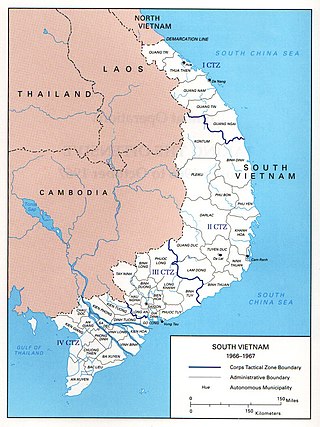
During the Cold War in the 1960s, the United States and South Vietnam began a period of gradual escalation and direct intervention referred to as the "Americanization" of joint warfare in South Vietnam during the Vietnam War. At the start of the decade, United States aid to South Vietnam consisted largely of supplies with approximately 900 military observers and trainers. After the assassination of both Ngo Dinh Diem and John F. Kennedy close to the end of 1963 and Gulf of Tonkin incident in 1964 and amid continuing political instability in the South, the Lyndon Johnson Administration made a policy commitment to safeguard the South Vietnamese regime directly. The American military forces and other anti-communist SEATO countries increased their support, sending large scale combat forces into South Vietnam; at its height in 1969, slightly more than 400,000 American troops were deployed. The People's Army of Vietnam and the allied Viet Cong fought back, keeping to countryside strongholds while the anti-communist allied forces tended to control the cities. The most notable conflict of this era was the 1968 Tet Offensive, a widespread campaign by the communist forces to attack across all of South Vietnam; while the offensive was largely repelled, it was a strategic success in seeding doubt as to the long-term viability of the South Vietnamese state. This phase of the war lasted until the election of Richard Nixon and the change of U.S. policy to Vietnamization, or ending the direct involvement and phased withdrawal of U.S. combat troops and giving the main combat role back to the South Vietnamese military.
The Army Alpha is a group-administered test developed by Robert Yerkes and six others in order to evaluate the many U.S. military recruits during World War I. It was first introduced in 1917 due to a demand for a systematic method of evaluating the intellectual and emotional functioning of soldiers. The test measured "verbal ability, numerical ability, ability to follow directions, and knowledge of information". Scores on the Army Alpha were used to determine a soldier's capability of serving, his job classification, and his potential for a leadership position. Soldiers who were illiterate or foreign speaking would take the Army Beta, the nonverbal equivalent of the exam.
Myra MacPherson is an American author, biographer, and journalist known for writing about politics, the Vietnam War, feminism, and death and dying. Although her work has appeared in many publications, she had a long affiliation with The Washington Post newspaper. She was hired in 1968 by Post executive editor Ben Bradlee to write for the paper's Style section, and remained with the Post for over two decades until 1991. While with the title, she profiled those involved in Watergate, covered five presidential campaigns, women's rights issues and wrote a series on Vietnam veterans that led to her 1984 book Long Time Passing: Vietnam and the Haunted Generation. It was the first trade book to examine post-traumatic stress disorder (PTSD) and, according to Vietnam expert Arnold R. Isaacs, one of the first to "break the long national silence" about the war and remains one of the most moving and important works on the Vietnam bookshelf." The author Joseph Heller wrote: "MacPherson's book belongs with the best of the works on Vietnam."
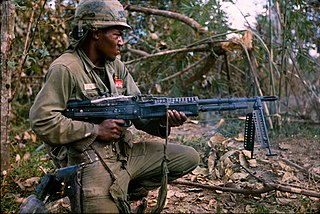
African Americans played a prominent role in the Vietnam War. The Vietnam War was the first American war in which Black and White troops were not formally segregated, and even saw significant growth in the number of African Americans engaged in battlefield combat, though some de facto segregation still occurred.
Military conscription of people with disabilities has occurred on various occasions historically.

Rape during the Vietnam War, as well as other acts of wartime sexual violence, was committed against Vietnamese civilians by military personnel from the United States, South Korea, and other combatants. According to American academic Elisabeth Jean Wood, wartime rape was frequently committed by U.S. troops because their commanders tolerated them. Weaver stated that not only were documented crimes against Vietnamese women by United States military personnel ignored during the international legal discourse which occurred immediately after the war, but modern feminists and other anti-war rape campaigners, as well as historians, have continued to dismiss them.














